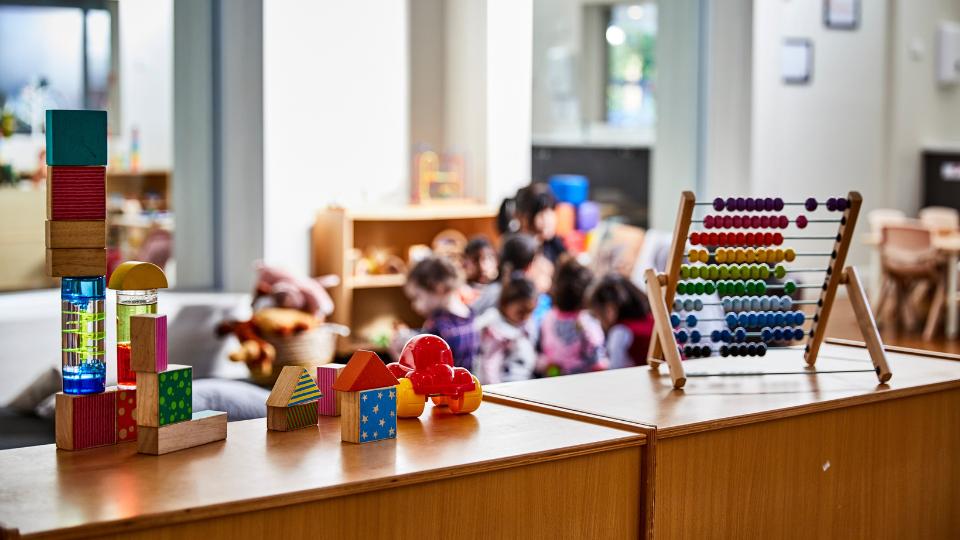USU UWLP Provides Update on Utah Childcare

Five years ago, the Utah State University Utah Women & Leadership Project (UWLP) published research on childcare in Utah. Since then, market failures and economic impacts from COVID-19 have contributed to crisis levels for childcare in the U.S. and Utah, heightening the challenges for working parents.
This week, the UWLP produced a research update to the 2018 report, which focuses on childcare needs, childcare accessibility, challenges faced by childcare providers, emerging childcare policy changes, and what Utahns can do to help improve the childcare landscape in the state.
In addition, the Salt Lake Tribune recently published an article “‘Shocking’: New report raises alarms about Utah child care access,” with information from the report “Mapping Care for Kids,” by Voices for Utah Children, a statewide policy advocacy organization that speaks out on behalf of children.
“The reports are independent of each other, yet both address problems concerning the care of Utah’s children,” said Susan Madsen, founding director of the UWLP. “The more advocates we have working to find solutions that help working parents and their children, the better. Our children are our future.”
The updated UWLP research addresses the challenges and provides information about the childcare landscape and what Utahns can do.
Childcare needs: Utah has the highest percentage of children of any state population – about 30%, and an estimated 64.1% of Utah families have their available parents working. According to the 2021 Voices for Utah Children report, seven of Utah’s 29 counties have 70% or more families with children under 18 with their available parents in the workforce: Grand (85.4%), Kane (77.6%), Wayne (74.9%), Summit (74.3%), San Juan and Weber (both 72.4%), and Carbon (70%).
Childcare accessibility: Affordability and availability are key factors in the accessibility of childcare. The U.S. Department of Health and Human Services affordability standard states that childcare should cost no more than 7% of a family’s income, yet Utah’s average cost for infant care for one child is double that at 14%. And since many Utahns have more than one child, that number increases substantially. Furthermore, Utah is one of 33 states where infant care costs more than in-state tuition for a four-year public college.
Regarding availability, the gap continues between the number of children potentially needing childcare in Utah and the number of slots available. In one analysis, an estimated 77% of Utahns live in a childcare desert—defined as “any census tract with more than 50 children under age five where there are either no childcare providers or so few options that there are more than three times as many children as licensed childcare slots.”
Challenges faced by childcare providers: Childcare workers and providers were significantly affected during the COVID-19 pandemic (e.g., increased operating costs, loss of employees and participants due to health/safety concerns). Government aid assisted them, helping many childcare businesses stay open. However, it is predicted that by June 2024, Utah will deplete approximately $573 million of COVID-era support that has helped keep the childcare sector afloat. This “funding cliff” may result in childcare program closures, higher costs of childcare for families, and a dramatic workforce turnover because of lowered wages in the childcare sector.
Emerging childcare policy changes: Several recent policy changes will help positively impact childcare in Utah. Utah is increasing funding for full-day kindergarten. This will allow families to send their children to a full day of school, opening opportunities for parents to increase work hours, find new work, and decrease the cost of childcare for many families throughout the state. Another bill signed into law will give greater access to childcare for parents who are government employees by allowing spaces in government buildings to be used as affordable childcare centers. And as of January 2024, Utah will be the 13th state to have its own childcare tax credit.
What Utahns can do: The report suggests several possible solutions. During the 2024 legislative session, legislators can sponsor and vote for bills that support families and make high-quality, affordable childcare a priority. Informal childcare can be increased by developing government compensation or tax credits for family members who provide childcare. Employers can offer affordable childcare at work, help subsidize childcare, provide paternity and maternity leave, and consider a four-day workweek or other flexible work schedules. Finally, it is imperative to recognize the essential work of all caregivers, both paid and unpaid, and their impact on Utah’s economy. Individuals should also prioritize childcare needs when voting for local and state representatives.
“Utah is known for valuing family and industry,” said Robyn C. Blackburn, UWLP research fellow and a report author. “Utah ranks first in the nation for our state’s economy and second for overall child well-being. Along with these strengths, however, we absolutely need to consider how to improve Utah’s rankings related to childcare. Developing an infrastructure to support Utahns with caregiving responsibilities has been neglected. Addressing childcare deficiencies will strengthen women and families in Utah and help ensure that our economy continues to thrive.”
An additional report author is Emily S. Darowski, UWLP research fellow.
Click here to view the full report, including the list of citations. For further information on UWLP programs and projects, visit utwomen.org.
Contact
Melinda Colton
Melinda.Colton@usu.edu


 Utah 4-H & Youth
Utah 4-H & Youth